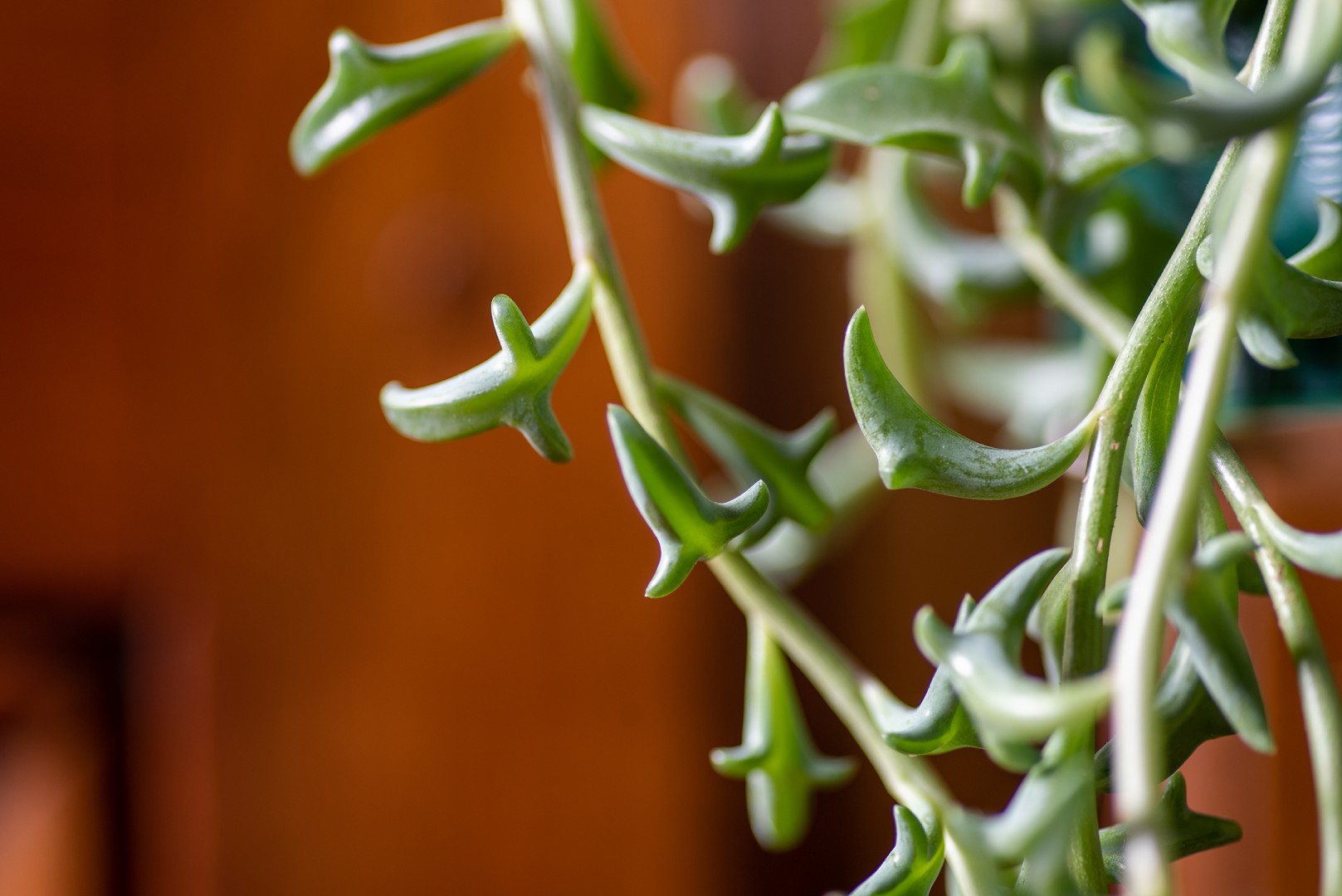
String of Dolphins (Senecio peregrinus) is a trailing plant that resembles the shape of a dolphin.
These plants are essentially succulents, so their maintenance should be in line with that of a succulent.

The String of Dolphins (Senecio Peregrinus) is a type of trailing succulent that resembles a group of jumping dolphins! The String of Dolphins belongs to the Asteraceae family and is a trailing succulent.
As an indoor plant, the String of Dolphins thrives when it gets at least 6 hours of indirect sunlight. Position your plant in a location that receives diffused light, as exposing them to direct sunlight can cause sunburn and rapid deterioration.
Be sure that light reaches the top of the pot as this is crucial to prevent its soil from staying damp too long - which can lead to root rot, increase the chances for pests and lead to the deterioration of your plant. If your plant is in a hanging basket or somewhere that light is not reaching the soil on your plant, you can supplement with a grow light.
Like most succulents, the String of Dolphins thrives in well-drained soil. It's recommended to use a potting mix specifically designed for succulents/cacti. If you're creating your own mix, a combination of 2 parts potting soil, 1 part perlite/pumice, and 1 part sand is perfect for this plant variety.
The String of Dolphins is a drought-resistant plant like other succulents. It can store water in its leaves for a long time. Consequently, it doesn't require frequent watering.
To avoid root rot and other issues related to overwatering, let the soil dry out between watering sessions. In fall and winter, plants are dormant, so water them less during this time. When watering into a pot without drainage holes, be sure to discard any excess watering sitting at the bottom of your pot to prevent root rot or pests.
The String of Dolphins doesn't require frequent fertilization. Overdoing it with fertilizer can lead to the leaves losing their distinctive dolphin form. However, giving them some food in the spring can help them grow and develop continuously. We recommend using organic fertilizer for the best results.
The string of dolphins plant can thrive in typical indoor home temperatures and humidity when cultivated indoors. String of Dolphins, a succulent, prefers colder temperatures compared to other succulents. They can withstand winter temperatures dropping to as low as 4 Degrees Celsius (40F).
Yes, String of Dolphins can be propagated through stem cuttings. Simply cut a healthy stem with a sharp, sterilized knife and allow the cut end to callus for a day or two. Then, place the cutting in well-draining soil and keep it lightly moist until roots develop.
Like many succulent plants, String of Dolphins can be toxic to pets if ingested. It's advisable to keep it out of reach of curious pets to prevent any potential harm.
To prevent leggy growth, ensure your plant is receiving adequate light. Rotate the plant periodically to promote even growth and consider pruning back any leggy stems to encourage bushier growth. You can also promote bushier growth at the top of the soil by taking some stems and pinning them into the soil with pins to allow the stems to root themselves into the soil.

The growth rate of String of Dolphins can vary depending on factors like light, temperature, and care. Generally, it's considered a slow to moderate grower compared to some other succulents.
Yes. When your String of Dolphins gets too long you can trim off the stem you want to shorten and the best part is you can propagate it if you like!
Yes your String of Dolphins can flower.
Parts of the stem on your plant may loose foliage or fall of due to the plants soil drying out too much at the top. String of Dolphins have a delicate root system and if exposed to longer periods of dry soil then it may cause your plant to loose or have its foliage dry up. If you bottom water your plant, ensure to mist or water the top of your plants soil to ensure that its entire root system is saturated when watering.